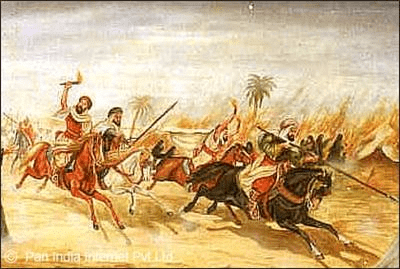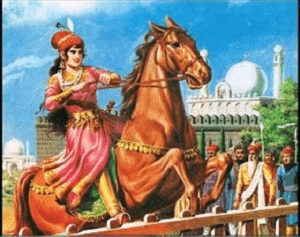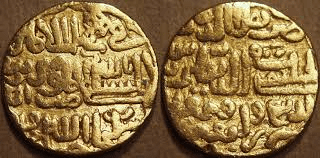Bank Exams Exam > Bank Exams Notes > IBPS PO Prelims & Mains Preparation > Dynasties and Rulers in Medieval India
Dynasties and Rulers in Medieval India | IBPS PO Prelims & Mains Preparation - Bank Exams PDF Download
MAHMUD OF GHAZNI
- Mahmud came to the throne of Ghazni in 997 AD.
- He started his raids in India in 1001 by attacking and killing Jaipala, the king of Punjab in the Ist Battle of Waihind.
- In the IInd Battle of Waihind (1008) he defeated Anandpala (Hindushahi ruler of Punjab).
- He led 17 expeditions between 1001 and 1027. He plundered Thaneshwar, Mathura, Kannauj and Somnath.
- The plunder of Somnath temple (dedicated to Shiva) in 1025, situated on the sea coast of Kathiarwar, was the most infamous one.
- His objective was to plunder the riches of temples and places and was not interested in expanding his empire to India.
MOHAMMAD GHORI
- He was also a ruler of a small kingdom in Afghanistan. But he was interested in conquering Northern India and adding it to his kingdom.
- Prithviraj Chauhan, who was the king of Delhi at that time, received contingents from other Rajput kings, defeated him in the Ist battle of Tarain (1191).
- But Mohammed Ghori defeated Prithviraj in the IInd Battle of Tarain in 1192.
- Died in 1206, leaving Qutub-ud-din Aibak in charge.

THE ILBARI DYNASTY OR SLAVE DYNASTY
QUTUB – UD – DIN AIBAK (1206 – 1210)
- Lahore and Later Delhi were his capitals.
- Famous for his generosity and earned the sobriquet of Lakh-baksh (giver of Lakhs).
- Laid the foundation of Qutub Minar after the name of famous Sufi saint, Khwaja Qutubuddin Bakhtiyar Kaki.
- Died of a horse fall at Lahore, while playing Chaugan (polo).
- Built the first mosque in India – Quwwat-ul-Islam (Delhi) and Adhai din ka jhonpra (at Ajmer).
Iltutmish (1210 – 1236)
- He formed Turkan-i-Chahalgani or chalisa (a group of 40 powerful Turkish nobles to suppress nobles).
- Divided his empire into IQTAS, an assignment of land in lieu of salary, which he distributed to his officers.
- He introduced the silver tanka and the copper jital – 2 basic coins of the Sultanate.
RAZIYA (1236 – 1240 )

- She disregarded purdah, began to adorn male attire and rode out in public on elephant back.
- She promoted Jalaluddin Yakut, an Abyssinian, to the important office of Superintendent of the stables. It provoked the Turkish officers.
- She had to marry Altunia, the Governor of Bhatinda.
- She was killed, along with her husband, by Bahram Shah, a son of Iltutmish.
- She was the first and the last Muslim woman ruler of medieval India.
BALBAN (1266 – 1286)
- He ordered the separation of military department from the finance department (diwan-i-wizarat) and the former was placed under a ministry for military affairs (diwan-i-ariz).
- They declared the Sultan as the representative of God on earth. He impressed upon the people that king was the deputy of God (niyabat-i-khudai) and the shadow of God (zil-i-ilahi). Introduced Sijdah or Paibos practice in which the people were required to kneel and touch the ground with their head to greet the Sultan.
THE KHALJI DYNASTY
JALALUDDIN FIRUZ KHALJI ( 1290 – 1296 )
- He was the first ruler to put forward the view that since a large majority of people in India are Hindus, the state in India could not be a total Islam state.
ALLAUDDIN KHALJI (1296 – 1316 )
- Added an entrance door to Qutab Minar, Alai Darwaza and built his capital
- Also built Hauz Khas, Mahal Hazar Satoon and Jamait Khana Mosque.
- First Sultan to have permanent army – paid soldier in cash, imported horses, detailed description of each soldier (chehra) and each horse (dagh) was kept (first time). His land revenue system is very famous.
- First Turkish Sultan of Delhi who separated region from politics. He proclaimed – “kingship knows no kinship”.
- Though Alauddin was illiterate, he was a patron of learning and art. There were many poets in his court. Both Amir Khusrau and Mir Hasan Dehlvi enjoyed his patronage.
THE TUGHLAQ DYNASTY
GHIYASUDDIN TUGHLAQ ( 1320 – 1325 )
- Took keen interest in construction of canals and formulated a famine policy.
- Built the fortified city of Tughlaqabad and made it his capital.
MUHAMMAD BIN TUGHLAQ ( 1325 – 1351)

- Regarded as the most controversial figure in Indian history, because of his five ambitious projects:
- Increase in the land revenue in the Doab: The measure provoked to be ill-timed, as Doab was passing through famine which was followed by plague.
- Transfer of capital to Devagiri (Daulatabad) in 1327: But Daulatabad was found to be unsuitable because it was not possible to control North India from there. So he decided to re-transfer the capital to Delhi.
- Introduction of token currency: Token currency meant introduction of bronze tankas in place of silver tankas with equal value. But this experiment failed, due to counterfeit coins. So he withdrew the scheme and all token coins were exchanged for silver coins.
- Planning of expedition for the conquest of Khurasan and Iraq: But the scheme was abandoned as conditions in Iraq improved (paid the extra army for one full year).
- The plan for the conquest of Qarachil (Kumaon hills): It also met with a disastrous end.
- During his last days, the whole of South India became independent and three major independent states – The Empire of Vijaynagar, the Bahmani kingdom and sultanate of Madura were founded.
- The famous traveller, Ibn Batuta came to Delhi during 1334.
FIROZ SHAH TUGHLAQ (1351 – 1388)
- Built new towns – Hissar, Firozpur, Fatehbad, Firoz Shah Kotla & Jaunpur.
- Repaired Qutab Minar when when it was struck by lightening.
- Built the capital Firozabad & to beautify it, brought 2 Ashoka Pillars, one from Topra in Ambala & the other from Meerut.
- Wrote a book ‘Fatuhat Firozshahi’.
NOTE :
- Timur was a great Mongol leader of Central Asia who reached Delhi in Dec. 1398.
- At that time, Nasiruddin Mehmud ( a later Tughlaq king ) was a ruler.
- Timur ordered general massacre in Delhi and robbed people mercilessly.
THE SAYYID DYNASTY
- Khizr khan founded his short-lived dynasty and claimed to have descended from the Prophet of Islam.
- Khizr khan’s 3 successors – Mubarak Shah (1431-33), Muhammad Shah (1434-43) & Alauddin Alam Shah (1443-51) were incapable leaders.
THE LODI DYNASTY
BAHLUL LODI (1451 – 1489)
- They were Afghans by race ( considered as the first Afghan dynasty of India ).
- Revived Sultanate to quite an extent.
SIKANDAR LODI (1489 – 1517)
- Noblest of the three Lodi rulers.
- Introduced the Gaz-I-Sikandari ( Sikandar’s yard ) of 32 digits for measuring cultivated fields.
- In 1504, he founded the city of Agra and made it his capital.
IBRAHIM LODI (1517 – 1526 )
- Was defeated and killed by Babur in the I Battle of Panipath in 1526.
The document Dynasties and Rulers in Medieval India | IBPS PO Prelims & Mains Preparation - Bank Exams is a part of the Bank Exams Course IBPS PO Prelims & Mains Preparation.
All you need of Bank Exams at this link: Bank Exams
|
541 videos|683 docs|263 tests
|
FAQs on Dynasties and Rulers in Medieval India - IBPS PO Prelims & Mains Preparation - Bank Exams
| 1. What were the major dynasties that ruled in Medieval India? |  |
Ans. The major dynasties that ruled in Medieval India were the Delhi Sultanate, the Vijayanagara Empire, the Mughal Empire, the Chola Empire, and the Rajput Kingdoms.
| 2. Who were the prominent rulers of the Delhi Sultanate? |  |
Ans. Some of the prominent rulers of the Delhi Sultanate were Qutub-ud-din Aibak, Balban, Alauddin Khalji, and Muhammad bin Tughlaq.
| 3. Which dynasty was known for its architectural marvels in Medieval India? |  |
Ans. The Mughal Empire was known for its architectural marvels in Medieval India, with prominent structures such as the Taj Mahal, Red Fort, and Fatehpur Sikri.
| 4. What was the significance of the Chola Empire in Medieval India? |  |
Ans. The Chola Empire was significant in Medieval India as it was a major maritime power and had a strong influence on trade and commerce in the Indian Ocean region. They also made significant contributions to art, architecture, and literature.
| 5. How did the Rajput Kingdoms contribute to Medieval India? |  |
Ans. The Rajput Kingdoms played a crucial role in Medieval India by resisting the invasions of the Delhi Sultanate and Mughal Empire. They also preserved the Indian cultural heritage and traditions through their patronage of art, music, and literature.
|
541 videos|683 docs|263 tests
|
Download as PDF

|
Explore Courses for Bank Exams exam
|

|
Signup for Free!
Signup to see your scores go up within 7 days! Learn & Practice with 1000+ FREE Notes, Videos & Tests.
Related Searches


















